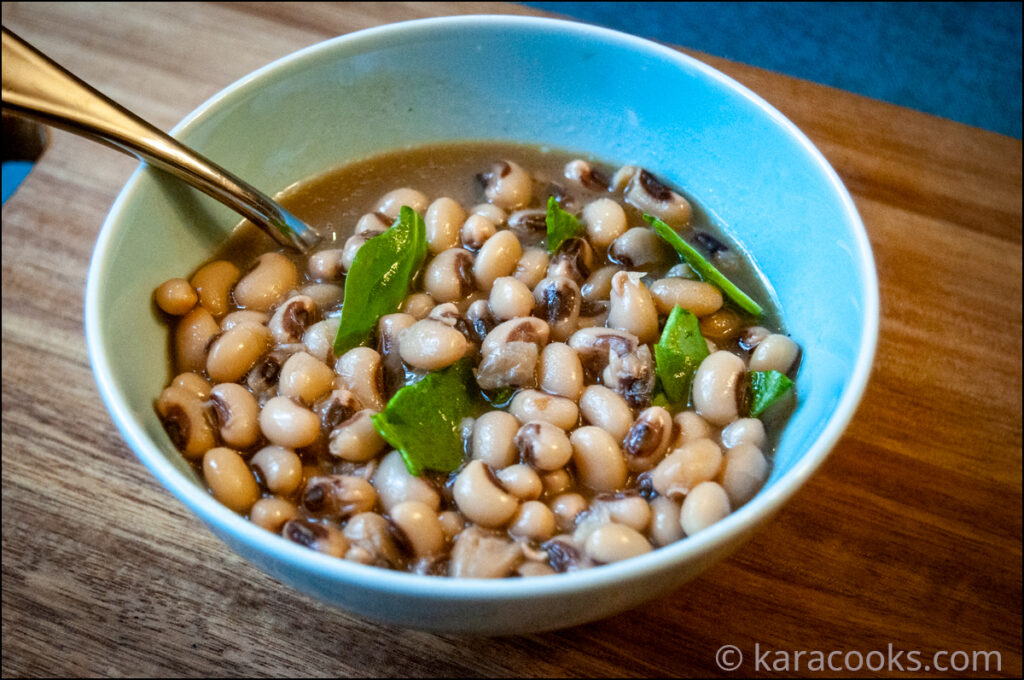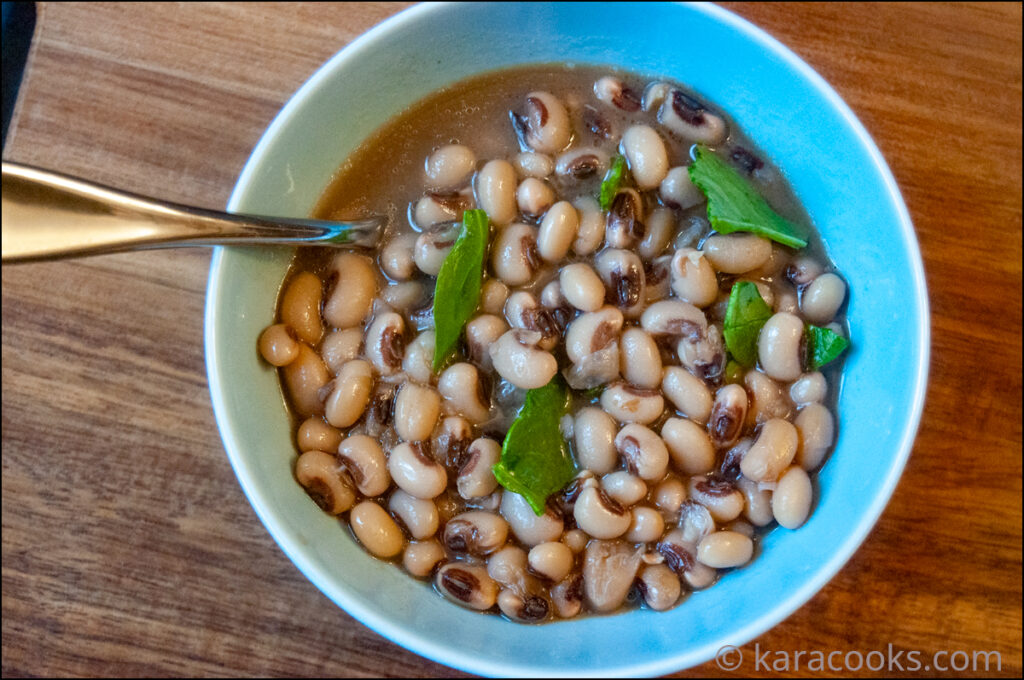It’s tradition in the South to eat black-eyed peas in some shape or form for luck in the new year. Some places make Hoppin’ John, a mixture of peas, rice, and pork or ham. In Texas, you couldn’t watch a New Year’s Day bowl game without Texas Caviar, a bean “salsa” made with peas, black beans, corn, tomato, cilantro, and lime. Or you can eat them the way we do: cooked until tender in ham stock and served with chunks of ham, collard greens, and cornbread. Eating black-eyed peas on New Years’ Day is supposed to bring luck and prosperity in the coming year, and who couldn’t use a little of that – especially this year!
How did black-eyed peas become a tradition in the South? As with so many of our “traditional” Southern foods, they’re a product of the African slave trade, brought to North America by enslaved people from coastal West Africa. Black-eyed peas, okra, sugar cane, yams, and rice are just some of the foods that are a product of the African Diaspora that have become synonymous with the Southern cooking in America.

And, as with all of these traditional Southern recipes, everyone and their Meemaw has a version and they all swear that theirs is the “authentic” one. Me? Not so much. I came late to the tradition of black-eyed peas and collards and didn’t really embrace it until I moved to Georgia in my early 30s. So my recipe is one I made up based on how I’ve always cooked beans, with a few nods to the history of Deep South traditions as I’ve learned about them over the last 22 years.
Recipe Notes:
This is a recipe for cooked beans rather than a bean soup and as such doesn’t contain a lot of other vegetables or a lot of broth or stock. If you want soupier beans, by all means add more liquid to this recipe and don’t be afraid to add things like chopped carrots, celery, or any other soup-type ingredients that appeal.
Soaking the beans overnight is always the best option, but if you are short on time, you can do a “rapid soak” by putting dried beans into cold water and bringing it to a full rolling boil for 20-30 mins. Then drain and rinse the beans and proceed as you would with beans that have been soaked overnight.
Finally, I like to make a rich ham stock using the leftover bone and bits of ham from our holiday ham. I use the stock to make both my black-eyed peas and my collards and I often put some of the “pot-likker” from the collards into the beans as I’m cooking them. But you can use any broth or stock you like – ham, chicken, beef, even a vegetable stock if you’re eating vegetarian or vegan.
Now on to the recipe and I hope you enjoy!

Black-Eyed Peas for New Years' Day Prep time: overnight + 10 mins Cook time: 90 mins - 2 hours Serves: 6 1-cup servings Ingredients • 1 1-lb bag of dried black-eyed peas • 1 medium yellow onion, peeled and diced • 2-3 cloves of garlic, minced • 1 tbsp olive oil • 4 cups broth or stock of your choice (I prefer ham) • salt & pepper to taste Instructions • Start by soaking the beans overnight in lightly salted water • Drain and rinse the beans and set aside • Heat the olive oil in a large pot until lightly shimmering • Cook the onions in the oil until translucent and just beginning to brown • Add the garlic and cook until fragrant, about 3 mins • Add in the drained and rinsed beans • Pour in the 4 cups of stock and bring to a boil, then reduce to a simmer • Cook for 90 mins to 2 hours or until the beans are tender Serving size: 1 cup of cooked beans Calories per serving: 240 | Fat: 2g | Carbs: 50g | Fiber: 13g | Protein: 18g
